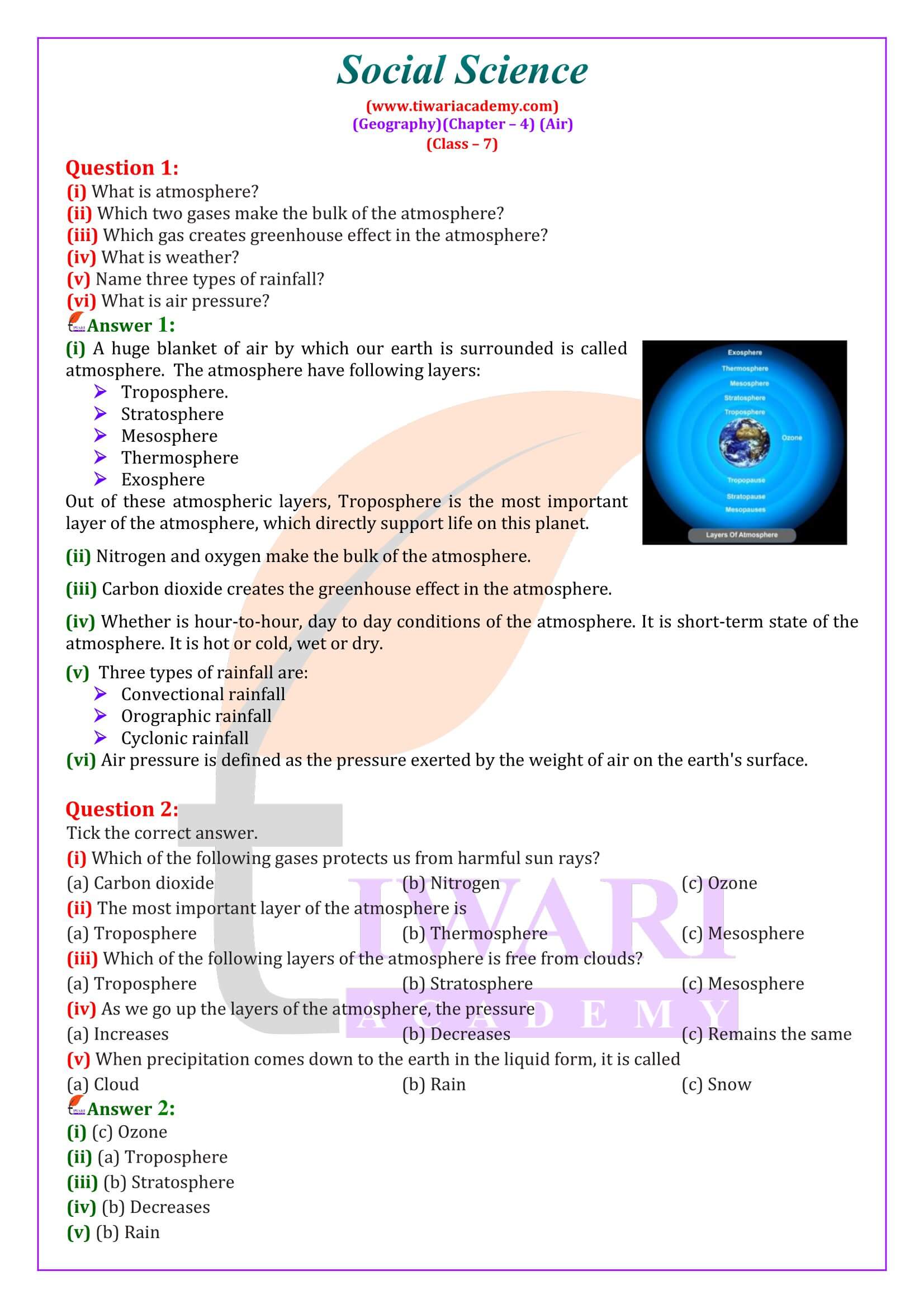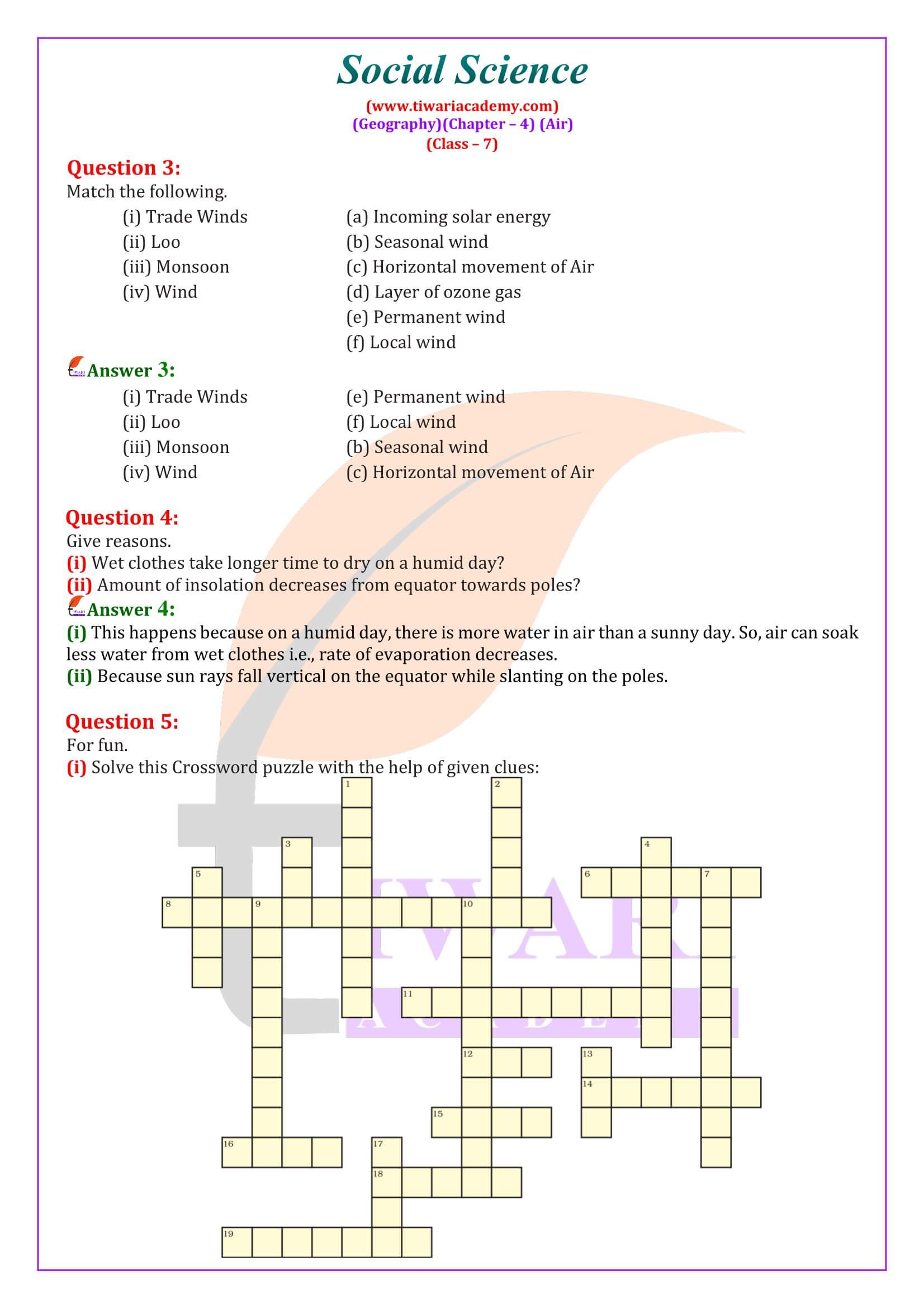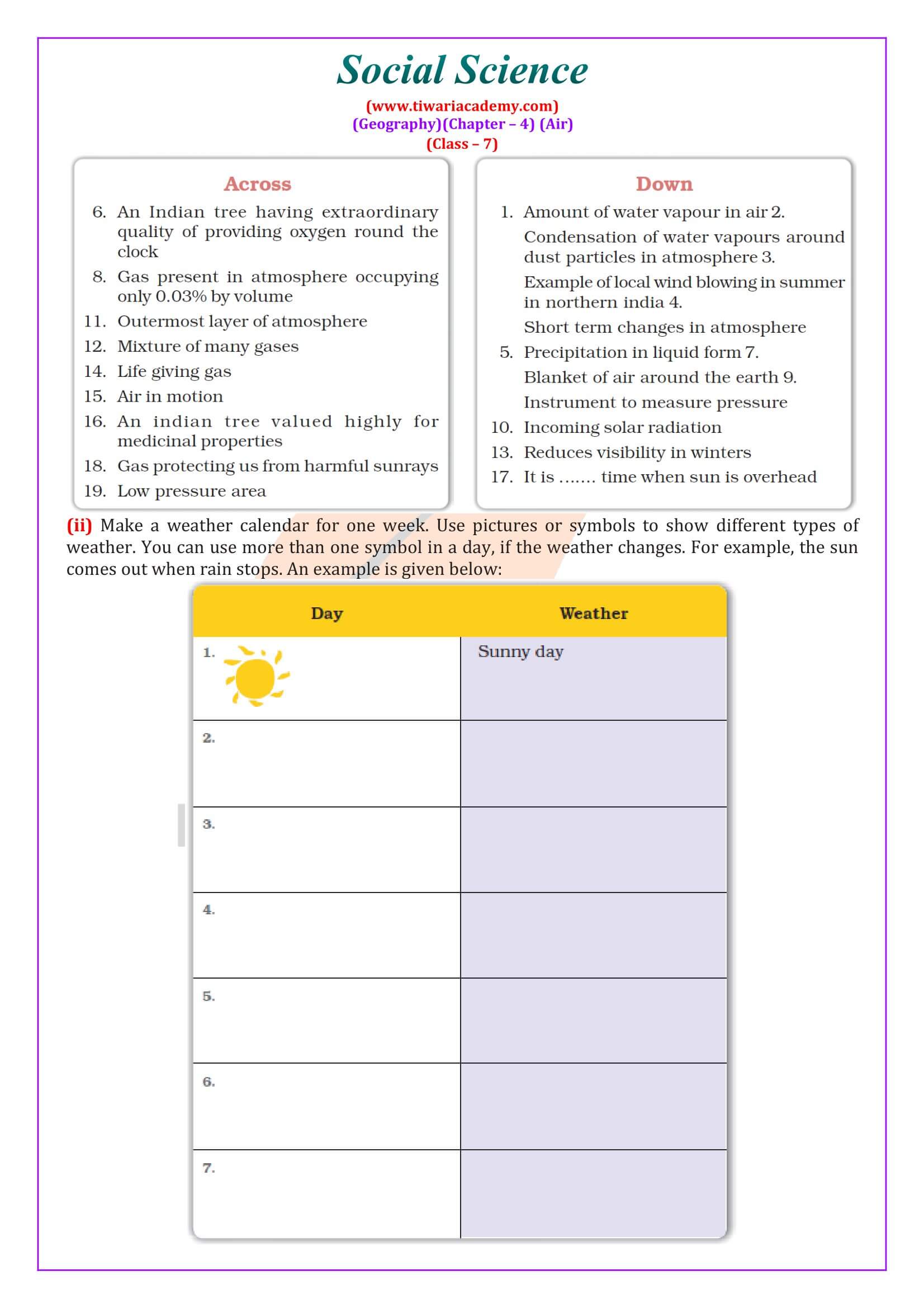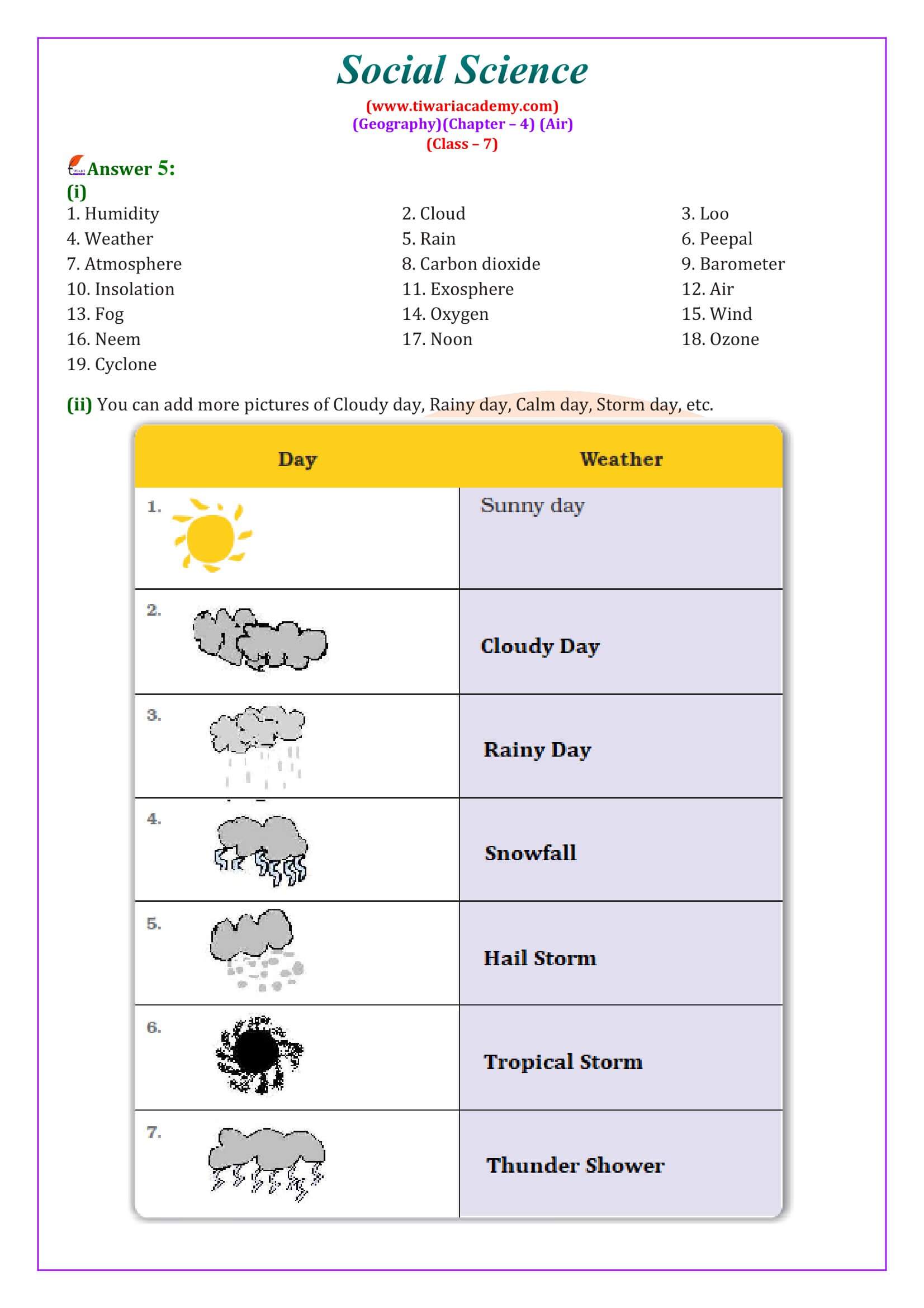NCERT Solutions for Class 7 Social Science Geography Chapter 4 Air in English Medium and Hindi Medium free to View online or download in PDF format to use it offline for the academic session 2024-25 following new NCERT Books. All the NCERT Solutions are based on latest NCERT Books for the year 2024-25. Solve Your Doubt here and answer your friend’s questions through Discussion Forum.
NCERT Solutions for Class 7 Social Science Geography Chapter 4
Class 7th Geography Chapter 4 Solution in Hindi and English Medium
| Class: 7 | Social Science |
| Subject: | Geography |
| Chapter 4: | Air |
| Medium: | English and Hindi Medium |
| Academic Session: | 2024-2025 |
Class 7 Geography Chapter 4 Explanation
Frequently Asked Questions on 7th Geography Chapter 4
Class 7 Geography Chapter 4 Extra Questions
What are the components of Atmosphere?
Nitrogen and oxygen are two gases which make up the bulk of the atmosphere. Carbon dioxide, helium, ozone, argon and hydrogen are found in lesser quantities. Apart from these gases, tiny dust particles are also present in the air.
Which is the most plentiful gas in our atmosphere?
Nitrogen is the most plentiful gas in the air. When we inhale, we take some amount of nitrogen into our lungs and exhale it. But plants need nitrogen for their survival. They can’t take nitrogen directly from the air. Bacteria, that live in the soil and roots of some plants, take nitrogen from the air and change its form so that plants can use it.
What are the different layers of atmosphere?
Our atmosphere is divided into five layers starting from the earth’s surface. These are Troposphere, Stratosphere, Mesosphere, Thermosphere and Exosphere.
What do you understand by Troposphere?
Troposphere: This layer is the most important layer of the atmosphere. Its average height is 13 km. The air we breathe exists here. Almost all the weather phenomena like rainfall, fog and hailstorm occur in this layer.
What is the importance of Stratosphere?
Stratosphere: Above the troposphere lies the stratosphere. It extends up to a height of 50 km. This
layer is almost free from clouds and associated weather phenomenon, making conditions most ideal for flying aeroplanes. One important feature of stratosphere is that it contains a layer of ozone gas. We have just learnt how it protects us from the harmful effect of the sun rays.
Describe Mesosphere briefly?
Mesosphere: This is the third layer of the atmosphere. It lies above the stratosphere. It extends up to the height of 80 km. Meteorites burn up in this layer on entering from the space.
What do you know about Thermosphere?
Thermosphere: In thermosphere temperature rises very rapidly with increasing height. Ionosphere is a part of this layer. It extends between 80-400 km. This layer helps in radio transmission. In fact, radio waves transmitted from the earth are reflected back to the earth by this layer.
Where is Exosphere located?
Exosphere: The upper most layer of the atmosphere is known as exosphere. This layer has very thin air. Light gases like helium and hydrogen float into the space from here.
Class 7 Social Science – Geography Chapter 4 – Important Questions
Why do the plates move?
The plates move because of the movement of the molten magma inside the earth.
What is atmosphere?
A huge blanket of air by which our earth is surrounded is called atmosphere. The atmosphere have following layers: Troposphere. Stratosphere Mesosphere Thermosphere Exosphere Out of these atmospheric layers, Troposphere is the most important layer of the atmosphere, which directly support life on this planet.
Which two gases make the bulk of the atmosphere?
Nitrogen and oxygen make the bulk of the atmosphere.
Which gas creates greenhouse effect in the atmosphere?
Carbon dioxide creates the greenhouse effect in the atmosphere.
What is weather?
Whether is hour-to-hour, day to day conditions of the atmosphere. It is short-term state of the atmosphere. It is hot or cold, wet or dry.
Name three types of rainfall?
Three types of rainfall are: Convectional rainfall Orographic rainfall Cyclonic rainfall
What is air pressure?
Air pressure is defined as the pressure exerted by the weight of air on the earth’s surface.
Why does wet clothes take longer time to dry on a humid day?
This happens because on a humid day, there is more water in air than a sunny day. So, air can soak less water from wet clothes i.e., rate of evaporation decreases.
Amount of insolation decreases from equator towards poles?
Because sun rays fall vertical on the equator while slanting on the poles.
NCERT Solutions for Class 7 Social Science Geography Chapter 4 Air.
Download NCERT Solutions for Class 7 Social Science Geography Chapter 4 Air in PDF form from this page. If you don’t want to download, online study is also available for all. To download or study online without downloading, there is no login at all. You are free to use Class 7 Geography Chapter 4 Solutions.
Class 7 Geography Chapter 4 Question Answers
CBSE NCERT Solutions for Class 7 Social Science Geography Chapter 4 Air is given here updated for session 2024-25. Download NCERT Solutions 2024-25 for offline use or use as it is without downloading online. Offline apps are very useful in case your internet is weak or there is no internet.








